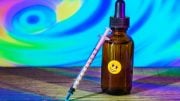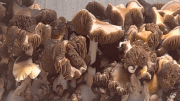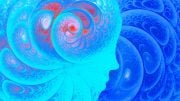
A recent study by researchers at Johns Hopkins Medicine reveals that psychedelic drugs may be capable of reopening “critical periods” in the brain, when mammals are more receptive to learning from their environment. This research provides new insights into how these drugs function and suggests potential applications for conditions like stroke and deafness, beyond current studies focusing on depression, addiction, and PTSD.
Johns Hopkins Medicine researchers found that psychedelic drugs can reopen “critical periods” in the brain, enhancing its receptivity to learning from the environment.
The effect varies in duration, from two days to four weeks, depending on the drug. This discovery offers potential applications in treating conditions like stroke and deafness, as well as providing insight into the functioning of these drugs and their impact on molecular mechanisms.
Neuroscientists have long searched for ways to reopen “critical periods” in the brain, when mammals are more sensitive to signals from their surroundings that can influence periods of brain development. Now, researchers at Johns Hopkins Medicine say a new study in mice shows that psychedelic drugs are linked by their common ability to reopen such critical periods, but differ in the length of time the critical period is open — from two days to four weeks with a single dose.
The findings, to be published on June 16 in the journal Nature, provide a new explanation for how psychedelic drugs work, say the scientists, and suggest the potential to treat a wider range of conditions, such as stroke and deafness, beyond those in current studies of the drugs, such as depression, addiction, and post-traumatic stress disorder. The scientists also provide a new look at molecular mechanisms impacted by psychedelics.
Critical periods have been demonstrated to perform such functions as helping birds learn to sing and helping humans learn a new language, relearn motor skills after a stroke, and establish dominance of one eye over the other eye.
“There is a window of time when the mammalian brain is far more susceptible and open to learning from the environment,” says Gül Dölen, M.D., Ph.D., associate professor of neuroscience at the Johns Hopkins University School of Medicine. “This window will close at some point, and then, the brain becomes much less open to new learning.”
Building on her laboratory’s experience studying social behavior, Dölen’s team has been researching how psychedelic drugs work by reopening these critical periods. In 2019, her team found that MDMA, a psychedelic drug that arouses feelings of love and sociability, opens a critical period in mice.
At the time, Dölen thought MDMA’s prosocial properties smooth the way for opening the critical period, but her team was surprised, she says, to find in the current study that other psychedelic drugs without prosocial properties could also reopen critical periods.
For the current study, Dölen’s team looked at the reopening potential of five psychedelic drugs — ibogaine, ketamine, LSD, MDMA, and psylocibin — shown in numerous studies as able to change normal perceptions of existence and enable a sense of discovery about one’s self or the world.
The research team conducted a well-established behavioral test to understand how easily adult male mice learn from their social environment. They trained mice to develop an association between an environment linked with social interaction versus another environment connected with being by themselves. By comparing time spent in each environment after giving the psychedelic drug to the mice, the researchers were able to see if the critical period opened in the adult mice, enabling them to learn the value of a social environment — a behavior normally learned as juveniles.
For mice given ketamine, the critical period of social reward learning stayed open in the mice for 48 hours. With psilocybin, the open state lasted two weeks. For mice given MDMA, LSD and ibogaine, the critical period remained open for two, three and four weeks, respectively.
The researchers say the length of time that the critical period stayed open in mice seems to roughly parallel the average length of time that people self-report the acute effects of each psychedelic drug.
“This relationship gives us another clue that the duration of psychedelic drugs’ acute effects may be the reason why each drug may have longer or shorter effects on opening the critical period,” says Dölen.
“The open state of the critical period may be an opportunity for a post-treatment integration period to maintain the learning state,” she adds. “Too often, after having a procedure or treatment, people go back to their chaotic, busy lives that can be overwhelming. Clinicians may want to consider the time period after a psychedelic drug dose as a time to heal and learn, much like we do for open heart surgery.”
Next, the scientists looked at psychedelic drugs’ impact on molecular mechanisms. First, in mouse brain cells, they examined a binding point, known as a receptor, for the neurotransmitter serotonin. The researchers found that while LSD and psilocybin use the serotonin receptor to open the critical period, MDMA, ibogaine and ketamine do not.
To explore other molecular mechanisms, the research team turned to ribonucleic acid (RNA), a cousin to DNA that represents which genes are being expressed (producing proteins) in the mice’s cells. The researchers found expression differences among 65 protein-producing genes during and after the critical period was opened.
About 20% of these genes regulate proteins involved in maintaining or repairing the extracellular matrix — a kind of scaffolding that encases brain cells located in the nucleus accumbens, an area associated with social learning behaviors that are responsive to rewards.
Reference: 14 June 2023, Nature.
DOI: 10.1038/s41586-023-06204-3
Funding for the research was provided by the Klingenstein-Simons Foundation, the Kavli Neuroscience Discovery Institute Distinguished Postdoctoral Fellowship, the Johns Hopkins Provost’s Postdoctoral Fellowship Program and the National Institutes of Health (R01MH117127, R01HD098184, R01AG066768, R01AG072305, K99NS122085).
Others who helped conduct the research were Romain Nardou, Edward Sawyer, Young Jun Song, Makenzie Wilkinson, Yasmin Padovan-Hernandez, Júnia Lara de Deus, Noelle Wright, Carine Lama, Sehr Faltin, Loyal Goff and Genevieve Stein-O’Brien from Johns Hopkins.









Fascinating. This is why I read about psychadelics, that learning window of enhanced neuroplasticity. We’ve relatively recently found that neuroplastic “window will close at some point” is untrue, but “the brain becomes much less open to new learning” is very true; that window just isn’t wide-open anymore. What if we can use psychadelics as a temporary window-jack for enhancing learning or re-learning?
I’d love to criticize this study, and pick it apart. With how little we understand about the topic, and certainly how little I know about it, this study just looks excellent.